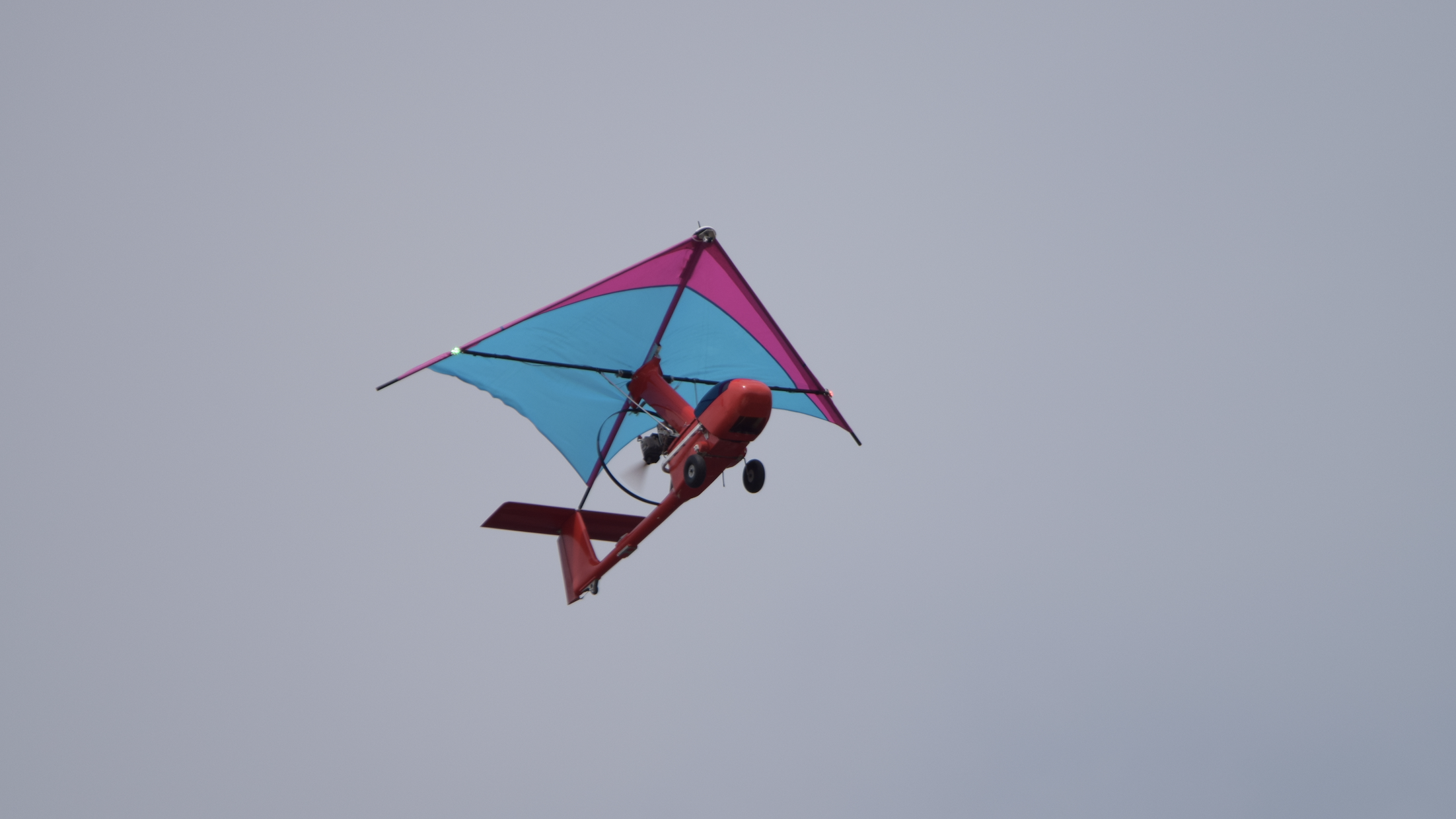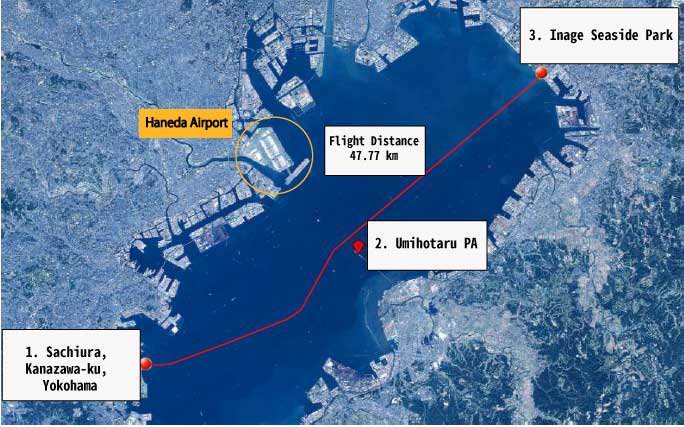2021.6.21
A small drone “Kite Plane” flies over Tokyo Bay

On June 21, 2021, Advanced Robotics Foundation conducted a demonstration test of a long-distance flight across Tokyo Bay with a small drone, “Kite Plane.” Seven members of CAIV participated in the observational tour. The purpose of this test by a Level 3 invisible flight was to build a drone logistics highway in the low-altitude area over Tokyo Bay by connecting Yokohama City and Chiba City with a drone over a distance of about 50 km. The Kite Plane was loaded with dental works in a palm-sized case. Kenzo Nonami, Chairman of the Board, said, “Transporting small packages by a car on congested roads has a high environmental impact. Since drones can fly as long as there is an atmosphere, we would like to utilize this experiment as the first step to a drone logistics highway in the sky, which can be done with zero cost for infrastructure construction.”
The Kite Plane took off from Sachiura, Kanazawa-ku, Yokohama at around 8:40 a.m. and flew at about 100 m above Tokyo Bay while avoiding large ships, landed at Inage Seaside Park, Mihama-ku, Chiba City about an hour and a half later.
Inage Beach is also a historical place where manned flight training took place in the early 20th century. Under the excellent weather on the day, the CAIV members were eager to observe the aircraft’s structure. Sakito Koizumi, a second-year student of the doctoral course, said, “I am delighted to witness this historic flight experiment. The tail and fixed-wing structure were much simpler than I had imagined, and I was impressed by the fact that it was still capable of autonomous long-distance flight. I want to challenge myself in my future research without feeling fear of new things.”
Inage Beach is also a historical place where manned flight training took place in the early 20th century. Under the excellent weather on the day, the CAIV members were eager to observe the aircraft’s structure. Sakito Koizumi, a second-year student of the doctoral course, said, “I am delighted to witness this historic flight experiment. The tail and fixed-wing structure were much simpler than I had imagined, and I was impressed by the fact that it was still capable of autonomous long-distance flight. I want to challenge myself in my future research without feeling fear of new things.”


